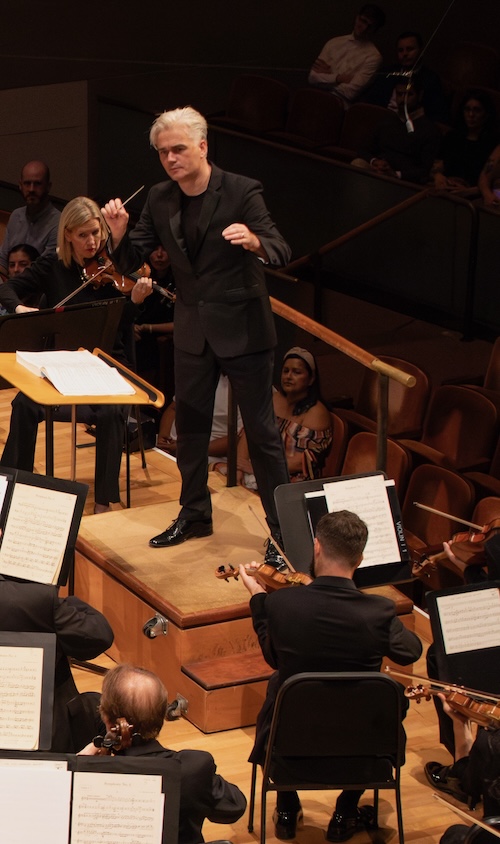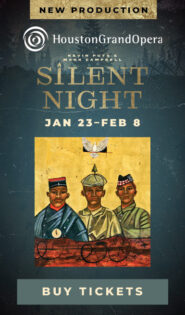Dallas Symphony launches season with dramatic Russian masterworks

The Dallas Symphony Orchestra opened its season Thursday night at Meyerson Symphony Center with a pair of masterpieces from two of Russia’s greatest composers led by Edward Gardner.
Although they represent different genres, Igor Stravinsky’s ballet Petrushka and Pyotr Tchaikovsky’s Symphony No. 4 each use the full resources of the orchestra to draw the audience into an emotionally compelling narrative, and the DSO under Gardner delivered captivating renditions of both works.
Gardner, music director of the Norwegian Opera and Ballet, prefaced the performance of Petrushka with some brief opening remarks on the ballet, describing its overall story and pointing out some of the coloristic effects that characterize the successive tableaux. The initial pacing of the opening “Shrove Tide Fair,” seemed somewhat deliberate for a passage meant to evoke the chaos and hubbub of a carnival. Following a brief interlude depicting an organ grinder, the resumption of the bustling fair music showed more of the energy that is consistent with diverse and busy crowds. By the dance of the puppets at the end of the tableau, the orchestra put across the proper rollicking mood,
From this point, the orchestra under Gardner ideally captured the appropriate moods for the successive scenes. Within the title character’s cell, Petrushka rages against his captivity in a series of awkward rhythms, grotesque instrumental combinations and jarring, polytonal harmonies. Following a failed attempt by Petrushka to win the affections of the Ballerina the scene shifts to the Moor relaxing in his more opulent surroundings to the sound of woodwind arabesques and “Turkish” percussion provided by bass drum and cymbals. The Ballerina joins him with her lilting flute and trumpet arpeggios, but they are interrupted by Petrushka’s manic sounds until the Moor pushes him out with brutal drum beats.
The final tableau sees a return to the fairgrounds later that evening. A sudden barrage of violent drum strikes followed by a howl of protest from Petrushka as he is chased by the Moor provides a brief distraction before the bustling activity of the fair resumes.
Gardner dispensed with opening remarks preceding Tchaikovsky’s fate-laden Fourth Symphony, choosing to let the music speak for itself.
In a letter to his patroness, the composer said the opening trumpet fanfare as representing the constant presence of Fate looming “like the sword of Damocles. . . . [Y]ou will never overcome it. You can only reconcile yourself to it, and languish fruitlessly.” Gardner’s deliberate tempo and moderate dynamics imbued the opening movement with an aura of tragedy.
The second movement consists of variations on a song-like melody that, while forlorn, doesn’t reach the depths of despondency suggested by the first movement. The orchestra’s restrained performance under Gardner captured this sentiment perfectly.
The third movement functions as a scherzo with all that that implies: quicker tempo, lighter character and generally a contrast to the rest of the symphony. This movement is a tour-de-force for pizzicato strings in all voices. A spritely trio sounded by mixed winds offers a melodic and timbral contrast.
The boisterous finale evokes festive gatherings not unlike those depicted in Petrushka. Indeed, with its percussive crashes, its rousing tempo and cascading principal theme, the energy brought by the DSO to this movement made it a rousing finish not just for the symphony, but for the evening as a whole. The recurring fanfare of the finale is interspersed with spirited folk song settings that easily suggest the possibility of losing oneself in the elation of others, as cited by the composer. And yet, the climax is marked by the unmistakable appearance of the Fate motif, a reminder that there is ultimately no escape.
The program will be repeated 7:30 p.m. Friday and Saturday. dallassymphony.org

